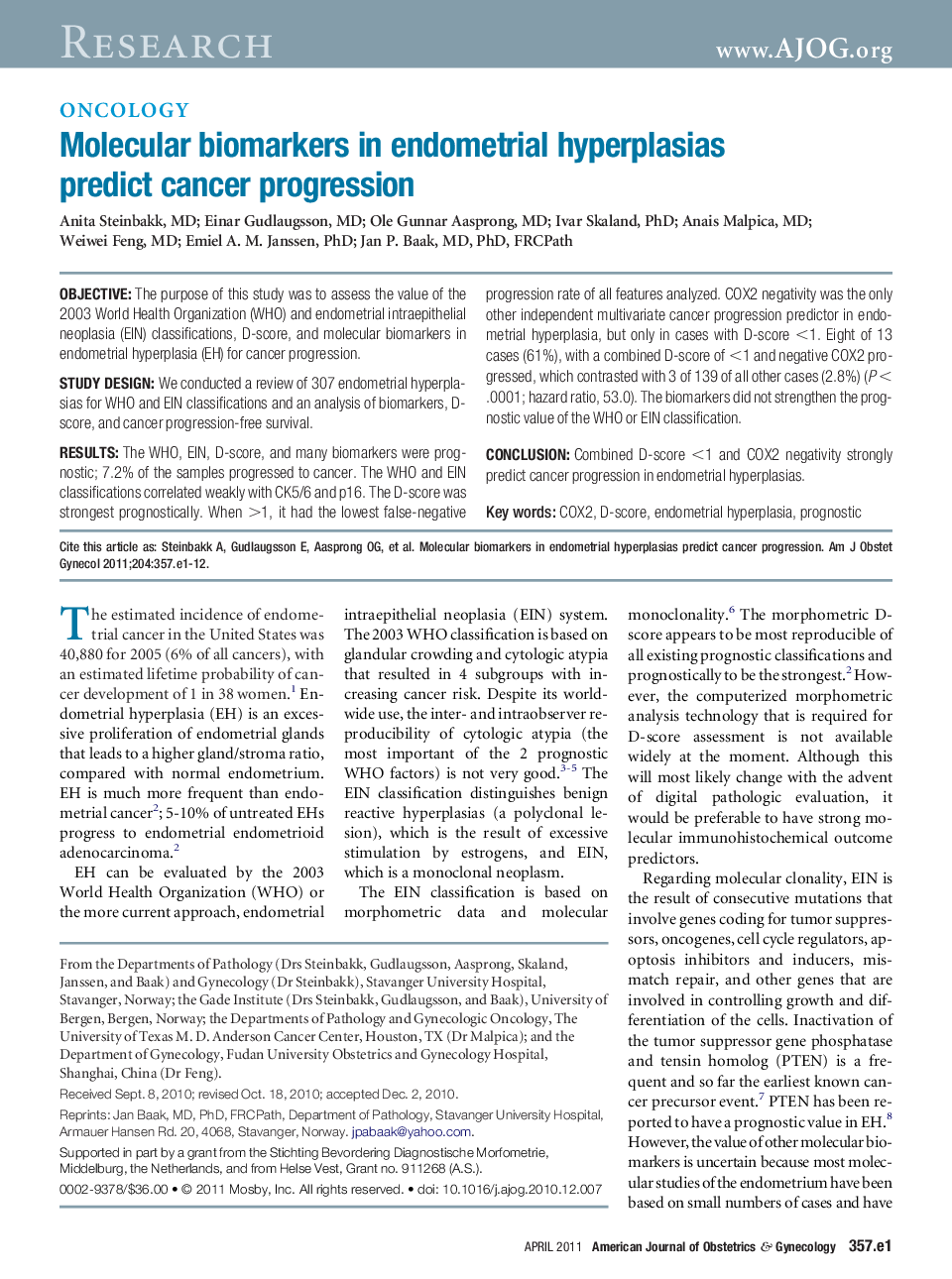| Article ID | Journal | Published Year | Pages | File Type |
|---|---|---|---|---|
| 6146903 | American Journal of Obstetrics and Gynecology | 2011 | 12 Pages |
ObjectiveThe purpose of this study was to assess the value of the 2003 World Health Organization (WHO) and endometrial intraepithelial neoplasia (EIN) classifications, D-score, and molecular biomarkers in endometrial hyperplasia (EH) for cancer progression.Study DesignWe conducted a review of 307 endometrial hyperplasias for WHO and EIN classifications and an analysis of biomarkers, D-score, and cancer progression-free survival.ResultsThe WHO, EIN, D-score, and many biomarkers were prognostic; 7.2% of the samples progressed to cancer. The WHO and EIN classifications correlated weakly with CK5/6 and p16. The D-score was strongest prognostically. When >1, it had the lowest false-negative progression rate of all features analyzed. COX2 negativity was the only other independent multivariate cancer progression predictor in endometrial hyperplasia, but only in cases with D-score <1. Eight of 13 cases (61%), with a combined D-score of <1 and negative COX2 progressed, which contrasted with 3 of 139 of all other cases (2.8%) (P < .0001; hazard ratio, 53.0). The biomarkers did not strengthen the prognostic value of the WHO or EIN classification.ConclusionCombined D-score <1 and COX2 negativity strongly predict cancer progression in endometrial hyperplasias.
